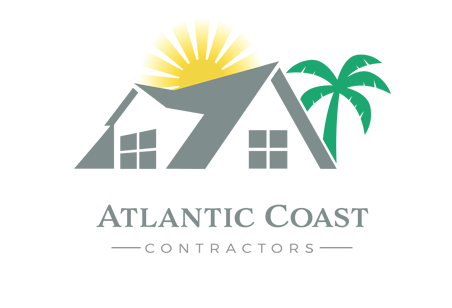A damaged or leaking roof in South Florida can be a big issue if left untreated. With the frequent rains and humid weather that we have here, it’s best to get your roof repaired as soon as possible. Every roof repair is a immediate but temporary solution to your roof issues. Most of the time, roof leaks or damage can be repaired without having to replace the roof. We will always provide you with the best options for you and your roof.
Check out our Portfolio page for info, photos and videos of repairs we have completed.
Is your roof leaking? Do you have damage to your roof that needs to be repaired? Click below to schedule an estimate!
Get EstimateTile Roof Repair
The average life expectancy of a tile roof covering in South Florida is 35 years. Many times home owners and property managers will develop roof leaks and issues much sooner than this. These leaks can happen due to improper installation, poor base sheet materials, or storm damage. With a tile roof the underlayment layers are what actually keep the water from penetrating the roof. The tile is solely cosmetic. When completing a tile roof repair, it is imperative to remove all of the tiles in the effected area. Any rotted wood must be replaced and then a new 30lb base sheet will be nailed, per code, using galvanized steel tin caps. Once this is completed, a new tile underlayment layer will be installed to the 30lb base sheet. the most common tile underlayment used for repairs is Polyglass TU Plus. After the underlayment is installed, if the original tiles can’t be re-used, we will match the tiles as closely as possible. The tiles will be installed with polyfoam tile adhesive. This will ensure that the new tiles are installed in a way that will not add penetrations to the underlayment layer. And ensure that this will be a long lasting tile roof repair.
Shingle Roof Repair
The average life expectancy of a shingle roof covering in South Florida is 20-30 years. The life expectancy greatly varies between an architectural shingle and a 3-tab shingle. The architectural shingle will last much longer than a 3-tab shingle and carries a better warranty. Shingle roof leaks more commonly occur on a 3-tab shingle roof.
With either type of shingle, the shingles and 30lb base sheet will need to be removed in order to inspect the wood roof deck. Any rotted wood must be replaced. Then we will install a new 30lb base sheet and nail per code, using galvanized steel tin caps. The perimeter of the new 30lb base sheet will then be sealed using modified roofing tar and fiber glass membrane. If there are any vents, valley metal or roof accessories in the repair area, they must be replaced prior to installing the new shingles. We will then install the new 3-tab or architectural shingles to the entire repair area, and tie them into the connecting sections of the roof. The new shingles will be installed using six 1.25″ electrogalvanized ring shank nails. As a precaution we will also seal every 3rd course of shingles in the repair area. This will ensure that your shingle roof repair will last a long time.
Flat Roof Repair
Unlike a tile or shingle roof covering, a flat roofs life expectancy can vary greatly. A modified flat roof system with a slope of 1:12 or more will have a life expectancy of approximately 20 years. A modified flat roof system that has a roof slope of 0:12 to 0.5:12 will most likely hold a significant amount of standing water. A flat roof that holds water will have a life expectancy at 10 years. This is much less than a flat roof with a steeper slope (1:12 or greater).
When completing a flat roof repair, the first step is to remove any cap sheet or base sheet layers, down to the structural roof deck. The most common roof deck types for flat roof systems will be a wood roof deck or a structural concrete roof deck. With a repair on a wood deck, any rotted wood will need to be replaced. With a structural concrete deck, the deck needs to be inspected for any weak areas or uneven surfaces that the base sheet will be applied to. If any roof deck damage is observed, the effected area must be floated with a high-tinsel strength self-leveling concrete mixture, and allowed to cure. Once these problems have been addressed, a base sheet must be installed to the roof deck. A 75lb base sheet is the most common type of anchored base sheet used. It will be nailed per code with galvanized steel tin caps. The perimeter of this base sheet will be sealed using roofing tar and an embedded fiberglass membrane. Once this layer is sealed, we will install a 120lb modified bitumen torch down cap sheet. This will be torched and melted to the base sheet and connecting edges of the existing roof cap sheet. The perimeter of the new modified cap sheet will be reheated and manually pressed to the existing cap sheet to ensure that the new cap sheet has a strong bond to the original flat roof. Once this torch down cap sheet layer has cooled, the perimeter will be sealed with roofing tar and an embedded fiberglass membrane. Because the flat roof will remain exposed to the elements, we will then spread and press white granules into the tar layer at the perimeter of the repair area. This will make the dark tar stay cool, and not adsorb as much heat, which can cause the tar to crack.
A roof repair done properly using this method will be a very long lasting repair, and will typically last longer than the existing roof covering.
